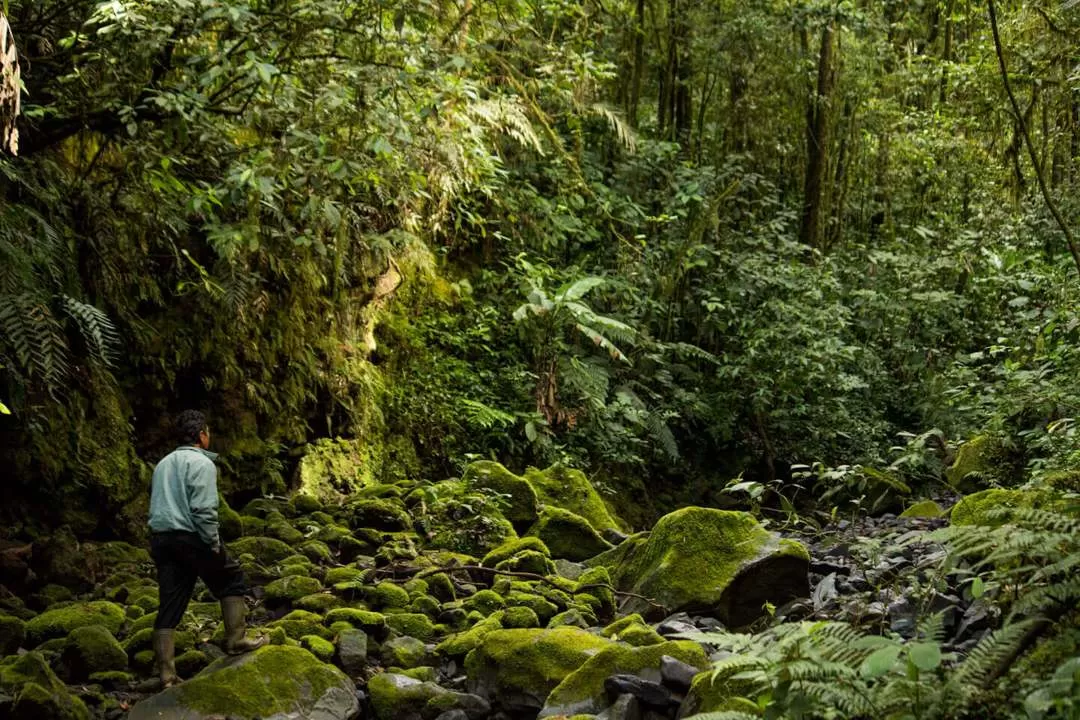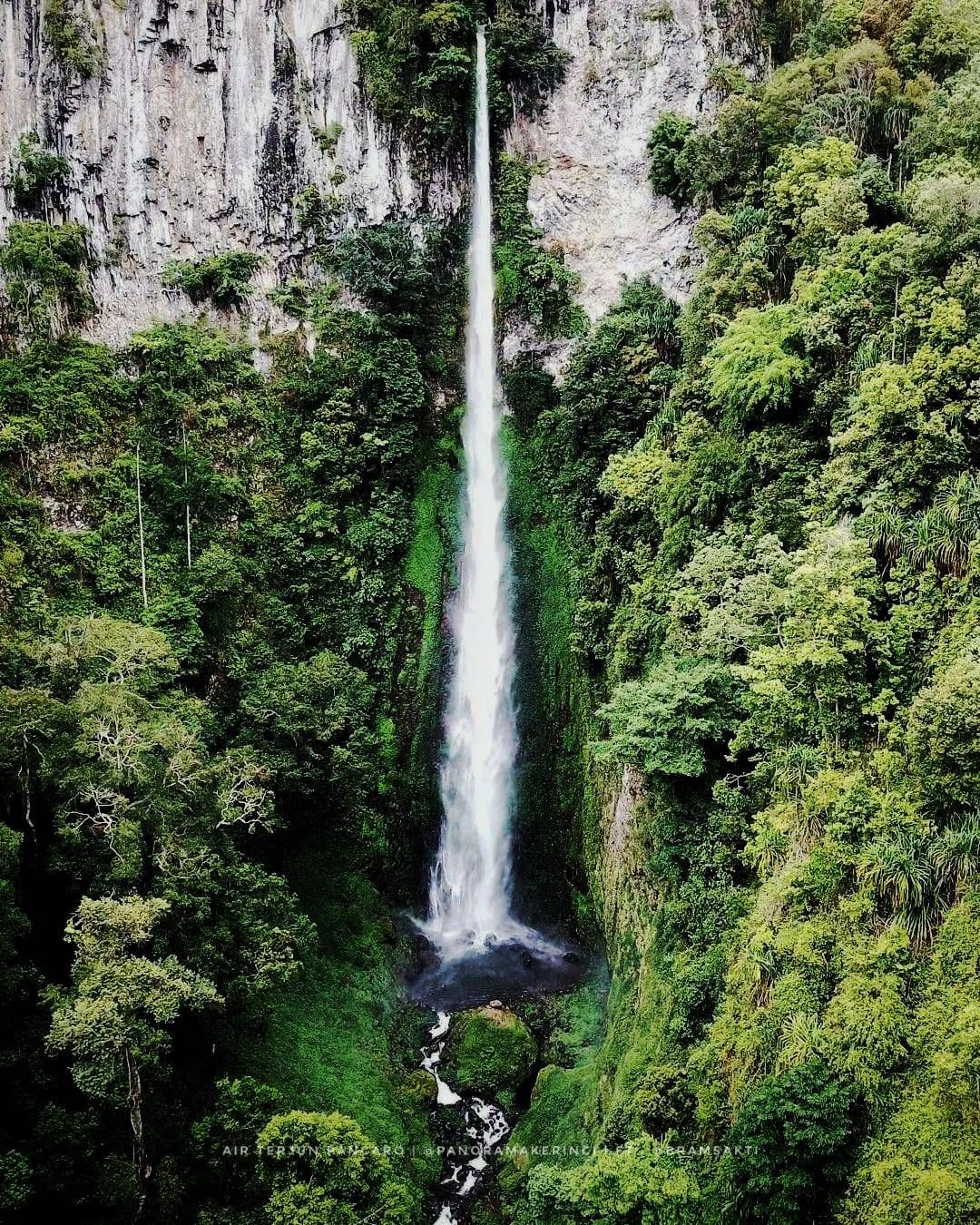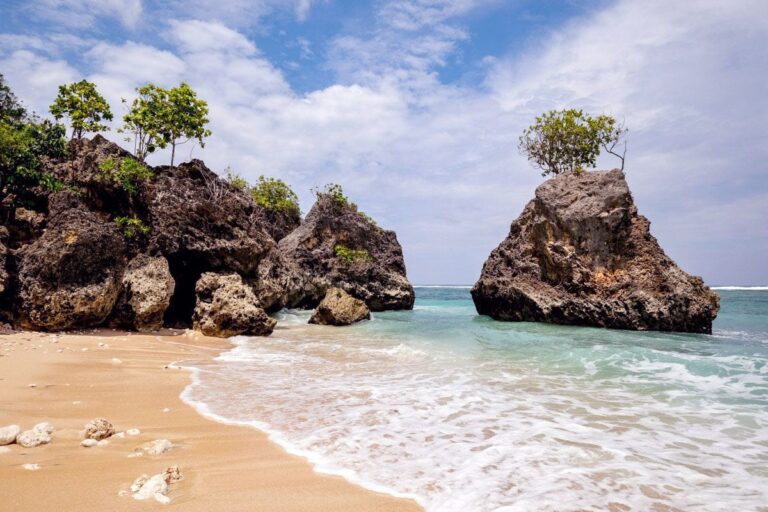Uncovering a Hidden Paradise: The Untouched Charm of Hidden Waterfalls in Indonesia
When Nature’s Secrets Wait Silently to Be Found
Hidden waterfalls in Indonesia are tucked deep within thick tropical forests, beyond unpaved village paths, or behind nameless hills that never made it onto a travel map, revealing a kind of beauty still preserved and pure.
Indonesia is home to hundreds, perhaps thousands, of waterfalls. However, only a handful have been discovered and popularized among travelers. The rest quietly wait to be found like buried treasures of nature, revealed only to those who are truly searching.
These hidden waterfalls aren’t just another spot on your itinerary. They’re an experience of raw adventure, an encounter with nature in its truest form, and more often than not, a moment of inner reflection that lingers long after you’ve left.
A Personal Story: Stumbling Upon a Nameless Hidden Waterfall

A few years back, I went hiking with a couple of friends through the hills of Sumatra. Along the way, we came across a narrow path that, according to locals, dates back to the Dutch colonial era. Some elders called it the “Dutch Road,” while others believed it was once part of a pilgrimage trail used by those journeying on foot to the holy land.
Curious, we followed it.
That’s when we heard it faint at first, the rushing sound of water. We moved closer, and there it was: a tall waterfall that looked like a silver thread from afar. We didn’t know its height, and it didn’t have a name. But one thing was clear: it was wild, untouched, and ethereal.
No tourists, no signage, not even a bench. It felt like stumbling into a world that hadn’t been disturbed for centuries. A place where nature still speaks its language.
Why Hidden Waterfalls in Indonesia Are Worth Exploring
Remote waterfalls, though not easy to reach, offer something that most touristy spots can’t: a raw and real experience. Here’s why they’re worth the effort:
-
Pure tranquility – No noise, no crowds. Just you and nature in full harmony.
-
Unspoiled scenery – Surrounded by thick forests, wildflowers, and moss-covered rocks.
-
The thrill of discovery – There’s something deeply satisfying about being among the first to lay eyes on a place.
-
Boosting local tourism – These gems are often located near rural villages, offering an opportunity to support small communities through thoughtful tourism.
What to Expect from Hidden Waterfalls in Indonesia
Each one is unique, but many remote waterfalls share a few things in common:
-
Limited access
You won’t be driving right up to the site. Be ready to trek through forest trails or over hillsides. -
No facilities
No restrooms, no food stalls, no souvenir shop, just raw nature. -
Off the digital grid
Most of these waterfalls aren’t even listed on Google Maps, and many don’t have official names. -
Pristine condition
Untouched by tourism, the surrounding ecosystem is often vibrant, with crystal-clear waters fed by natural springs.
The Double-Edged Sword of Discovering Hidden Waterfalls
Discovering a hidden waterfall is thrilling, but turning it into a tourist destination comes with both promise and peril.
The Upside
-
Local economies benefit from increased foot traffic.
-
Job creation (guides, homestays, food stalls).
-
Heightened awareness of environmental conservation
Read more about the ecotourism impact here.
The Risks
-
Environmental degradation due to irresponsible tourism.
-
Lack of infrastructure (roads, sanitation, safety).
-
Cultural disruption if local communities aren’t involved.
This is where sustainable travel matters. Without thoughtful planning and community participation, even the most beautiful places can be loved to death.
Tips for Visiting Hidden Waterfalls Across Indonesia
Thinking of chasing one of these natural wonders? Keep these tips in mind:
-
Do your research
Ask local villagers, join nature forums, or connect with hiker communities. -
Hire a local guide
It’s safer, and often, they’ll share local legends or stories that enrich your trip. -
Be self-sufficient
Pack your food, water, first-aid kit, and trash bag. -
Travel in a group
It’s always better (and safer) to explore the unknown with company. -
Respect nature and local customs
Don’t leave trash, don’t trample plants, and always be courteous to the land and its people.
The Role of Youth and Community in Protecting Indonesia’s Hidden Waterfalls
Safeguarding natural gems isn’t just the job of governments or NGOs. Young people today have a powerful voice and reach. From creating viral travel content to launching conservation projects, local youth are emerging as true guardians of these hidden paradises.
Many are now mapping unknown trails, producing eco-awareness content, and starting small-scale clean-up drives. These are the unsung heroes keeping nature safe. Learn how communities are leading conservation.
From Hidden to Headline: Famous Indonesian Waterfalls That Were Once Unknown
Not all hidden waterfalls stay secret. Some, through word-of-mouth and stunning visuals, eventually gain national or even international fame. For example:
-
Madakaripura Waterfall (East Java) – Once known only to nearby villagers, now a beloved icon for its mystical curtain of water.
-
Tumpak Sewu (East Java) – Once the “secret” of serious hikers, now dubbed the “Indonesian Niagara” and even featured in National Geographic.
It shows that every hidden waterfall holds potential; perhaps the one you find next will be Indonesia’s future favorite.
Final Thoughts: Hidden Waterfalls Deserve Respect, Not Just Recognition
A hidden waterfall is more than a scenic spot. It’s a piece of untouched Earth, a whisper of how things used to be before noise and cement took over.
So if you’re lucky enough to find one, don’t rush to share it with the world just yet.
Pause. Feel the silence. Listen to what nature says when no one’s watching. Then ask yourself, can this place handle the weight of thousands of footprints?
Because sometimes, what makes a place truly beautiful isn’t just the view, I t’s the stillness, the purity, and the deep connection we feel standing there.







